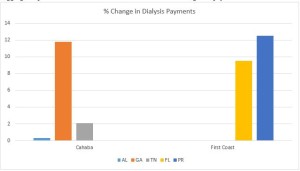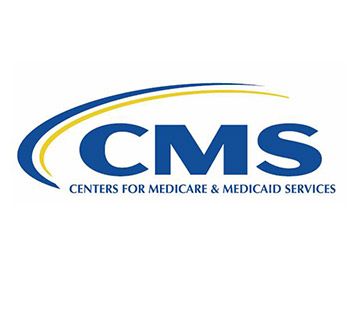The American Ambulance Association receives many questions from members for our expert consultants. Starting in February 2016, we will share responses to common questions on our blog. Have a more complex question? Contact an AAA expert directly.
Medicare | Human Resources & Operations | Labor Relations
Ask An AAA Expert: Ambulance Service Needs Some Direction on Mileage
[dropcap1]Q:[/dropcap1] Our service operates in a large metropolitan area. Within the city limits is a major university medical center. This hospital operates the only Level 1 Trauma Center within 100 miles. It is also the only hospital to offer interventional cardiology services and certain other advanced services within a 50-mile radius. As a result, patients from outlying areas are frequently transferred to this hospital. As the medical center’s contracted ambulance provider, we are often asked to transport patients long distances back to their towns of origin, either to their residences or to a skilled nursing centers (SNF). There are approximately a half a dozen SNFs located within a short distance (approximately five miles) of the hospital. Can you help us determine whether all of the mileage for these long distance transports will be covered by Medicare? If all of the mileage is not covered, can you help us determine the portion of the mileage that would be covered?
[dropcap1]A:[/dropcap1] In this inaugural edition of Ask the Medicare Consultant, we tackle one of the more difficult aspects of Medicare billing: how to determine the number of covered miles for long-distance hospital discharges.
The starting point for answering this question is to recognize that Medicare’s coverage rules will differ depending upon whether the patient is: (1) being returned to his or her residence, (2) is being returned to an SNF where he or she previously resided, or (3) is being transported to an SNF for an initial admission.
Where the patient is being returned to a residence (or a SNF at which they were previously admitted as a resident), Medicare’s coverage rules are relatively straightforward. Section 10.3.1 of Chapter 10 of the Medicare Benefit Policy Manual provides that:
“Ambulance service from an institution to the beneficiary’s home is covered when the home is within the locality of such institution, or where the beneficiary’s home is outside the locality of such institution, but the institution, in relation to the home, is the nearest one with appropriate facilities.”
For these purposes “locality” means the area surrounding the hospital from which patients would normally travel to that hospital for medical care. See Section 10.3.5 of Chapter 10 of the Medicare Benefit Policy Manual. Therefore, to the extent the patient’s residence falls within the “catchment area” of the hospital, the Manual makes clear that all of the mileage back to the patient’s residence will be covered.
To the extent the patient’s residence falls outside the hospital’s catchment area, the test is whether that hospital was the nearest appropriate facility (in relation to the patient’s residence) for the treatment of the patient’s medical condition.
Consider a patient that went to his local hospital with a complaint of chest pain, and who was ultimately diagnosed with a major cardiac blockage requiring bypass surgery. The patient was then transferred to the university medical center for that surgery (the only facility offering interventional cardiology within a 50-mile radius). The patient is now ready to be discharged back to his residence, a distance of 45 miles.
In this instance, the patient’s residence falls outside the catchment area of the medical center. However, the medical center was the nearest appropriate facility for the treatment of the patient’s medical condition. Accordingly, all of the mileage to this patient’s residence would be covered.
Unfortunately, it can sometimes be difficult to apply this test in practice, because the patient’s medical condition does not always manifest itself while at home. For example, what if this cardiac patient did not reside in the area, but rather was in the area visiting a son or daughter? Let’s further assume that the patient actually resided a few hundred miles away, in another major urban center (e.g., Chicago).
The university medical center would clearly not be the nearest appropriate facility when measured in relation to the patient’s home. Therefore, at the onset, it is clear that there is some non-covered mileage. The question then becomes, “how many miles?”
The test indicates that the covered mileage is the mileage from the patient’s residence to the nearest appropriate facility for that treatment. For these purposes, let’s also assume that there is a hospital that offers interventional cardiology located 10 miles from the patient’s residence. Therefore, in this example, the first 10 miles would be covered, and the remaining mileage would be non-covered.
A good rule of thumb: if all of mileage from the patient’s residence to the university medical center would have been covered (whether or not the patient actually traveled to that facility by ambulance), then all of the mileage back to that residence will also be covered.
The test for discharges to a SNF for an initial admission is a bit more complicated. The starting point is Section 10.3 of Chapter 10 of the Medicare Benefit Policy Manual, which provides that “only mileage to the nearest appropriate facility equipped to treat the patient is covered.”
In the original question, it was indicated that there were a number of SNFs located within a short distance of the university medical center. For the purposes of convenience, let’s assume that the nearest SNF is located across the street from the hospital, the next closest is located one mile away, the next closest is located two miles away, etc.
Thus, if the patient is transported to the SNF across the street, the entire mileage would be covered.
If the patient was transported to the next closest SNF, we cannot determine whether all of the mileage is covered without first determining whether the closer SNF had a bed available on that date. Note: a facility is not considered an “appropriate facility” if it does not have an available bed at the time of the transport. In other words, if the closer SNF had a bed on that date, then only the mileage to that SNF would be covered. The extra mileage, approximately 9/10ths of a mile, would not be covered. If, however, that closer facility did not have a bed available at the time, then the SNF to which the patient was transported would be the “nearest appropriate facility,” and all of the mileage would be covered.
Now imagine that the patient was taken the SNF two miles from the hospital. To properly calculate the covered mileage, we would need to know whether: (1) the SNF across the street had a bed available and (2) whether the SNF 1 mile from the hospital had a bed available).
[quote_left]“Does CMS really expect me to call one or more SNFs on every hospital discharge?”[/quote_left]And so on and so on…
At this point, you are probably asking yourself, “How can I possibly know if each of these closer SNFs had a bed available on that date? Does CMS really expect me to call one or more SNFs on every hospital discharge?”
The short answer: Yes, a literal interpretation of the Medicare coverage rules would require you to make those phone calls.
It goes without saying that this sort of process would be burdensome. Depending on the actual miles traveled, it may not even be possible to identify each and every closer SNF. For example, the original question alludes to transports of 50 or more miles. There could be dozens of SNFs located within a shorter distance. Calling each and every one of them is simply impractical.
In a perfect world, the hospital staff would notify you at the time they schedule the call that the patient is being transported beyond the nearest appropriate facility. However, in order to notify you, the hospital would have to know whether the nearby SNFs had a bed available on that date. The only way they could know that information would be to have called themselves. But why would the hospital call? The hospital likely gave the patient a choice, i.e., you can do your rehab in a nearby SNF or you can elect to go to an SNF in your hometown where you can be closer to your friends and family. As you would expect, the patient then elected to go closer to home.
So what to do?
One solution used by a number of ambulance providers is to draw a circle around the hospital that incorporates a sufficient number of SNFs so that they can be reasonably confident that there would be an available bed on any given day. In the original example, let’s assume that is the six SNFs located within five miles of the hospital. These ambulance providers have elected not to question any mileage below this threshold. Instead, they will bill up to five miles for coverage without any questions. These providers then assume that anything over that five-mile threshold is going to be excess mileage, which will need to be billed to the patient.
Please note that I am not suggesting that the first five miles would always be covered. Rather, these providers are engaged in a cost/benefit analysis. They are balancing the chances of having some portion of those five miles disallowed during a Medicare audit against the time and effort involved in calling each of these SNFs.
Please also keep in mind that this mileage circle would vary based on the local geography. In some areas, you may need to go out to 10, 20, or even 30 miles before you can incorporate a sufficient number of SNFs so that you can be assured that at least one would have an available bed on any given date. Of course, the larger the circle, the greater the potential that you may end up billing for substantial amounts of non-covered mileage. Thus, the decision to adopt a mileage parameter is one that should be made in consultation with your legal advisors.
Have a Medicare billing question? Do you suspect other AAA members are struggling with the same issues? If so, please let us know.
















